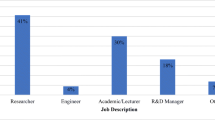Abstract
Since 1958 NASA has invested approximately $3.7 billion in life sciences R&D in the support of the successful human space flight program. There are numerous studies documenting the spin-off technologies that can be traced to NASA research and development activities. Most of these studies describe the technologies and their uses; however only a few measure the economic impact of the spin-offs and most of these are benefit/cost studies that tend to overstate benefits or underestimate costs. This study takes a different approach, measuring only economic impacts to the companies that developed successful spin-off products from NASA life sciences investments. A personal interview was conducted with each company and the benefits are conservatively estimated as the value-added by the NASA technology to the company's output and the amount of additional private R&D stimulated by the NASA R&D.
This pilot study of fifteen companies, using a very conservative measurement technique, found a large return to companies that have successfully commercialized NASA life sciences spin-off products. Value-added benefits totaled over $1.5 billion and a NASA R&D total investment in these 15 technologies of $64 million was found to stimulate an additional $200 million in private R&D.
The study also found that the largest benefits were from products developed and marketed by large companies, primarily because these companies had the financial and marketing resources to work on a scale unavailable to smaller companies. Many of the small companies reported very profitable product-lines as well as documented evidence of benefits extending to the commercial users of their products. However, the smaller companies often lacked either the ability or the desire to expand into much larger scale production.
NASA and other government technology transfer programs may be overlooking an opportunity to enlarge the economic benefits from their spin-off technologies. When a federal R&D grant or contract ends, the formal relationship between the agency and the company also usually ends. However, the companies continue to use the prior connection to NASA for advertising and for developing new business partners. One recommendation of this study is for NASA to be more proactive with “alumni” companies and to help open additional financial and marketing doors for these companies.
Similar content being viewed by others
References
Anderson, R.J., Jr., Lanen, W.N. Lanen, C.E. Agnew, F. Duchin, and E.P. Marfisi, 1977, A Cost Benefit Analysis of Selected Technology Utilization Office Programs, Princeton: MATHTECH.
Bach, L., et al., 1992, ‘Measuring and Managing Spinoffs: The Case of the European Space Agency,’ in J.S. Greenberg and H. Hertzfeld (eds.), Space Economics, Washington, DC: American Institute of Aeronautics and Astronautics, pp. 171–206.
Chapman, R.L., L.C. Lohman, and M.J. Chapman, 1989, An Exploration of Benefits from NASA “Spinoff”, Littleton: Chapman Research Group, Inc.
Hertzfeld, H., 1992, ‘Measuring Returns to Space Research and Development,’ in J.S. Greenberg and H. Hertzfeld (eds.), Space Economics, Washington, DC: American Institute of Aeronautics and Astronautics.
Mathematica, Inc., 1976, ‘Quantifying the Benefits to the National Economy from Secondary Applications of NASA Technology,’ NASA CR-2674, Princeton, March.
Author information
Authors and Affiliations
Rights and permissions
About this article
Cite this article
Hertzfeld, H.R. Measuring the Economic Returns from Successful NASA Life Sciences Technology Transfers. The Journal of Technology Transfer 27, 311–320 (2002). https://doi.org/10.1023/A:1020207506064
Issue Date:
DOI: https://doi.org/10.1023/A:1020207506064




